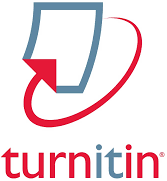EFFECT OF ADDITION OF TEMULAWAK EXTRACT (Curcuma xanthorriza) ON ARTIFICIAL FEED ON GURAMI FISH GROWTH (Osphronemus goramy)
DOI:
https://doi.org/10.29303/jfh.v1i2.531Keywords:
Temulawak Extract, Growth, GouramiAbstract
The problem with gouramy cultivation was slow growth due to the short intestines of gouramy so that the absorption of feed takes longer and less. Several previous studies used temulawak in the form of flour, extract, oil which was applied to carp, tilapia, milkfish, catfish. The addition of extract, temulawak flour to the feed gave an increase in growth both in length and weight in the test fish. The purpose of this study was to determine whether or not the effect of temulawak extract on the growth of gouramy fish. This research was conducted for 45 days. This research was conducted by experimental method using a completely randomized design (CRD) with 5 treatments (P) 3 times replication (U), in order to obtain 15 experimental units. Treatment 0 Control (without temulawak extract), Treatment 1 Provision of temulawak extract with a concentration of 14%/kg feed, Treatment P2 Administration of temulawak extract with a concentration of 16%/kg feed, treatment P3 Administration of temulawak extract with a concentration of 18%/kg feed, and treatment P4 administration of temulawak extract with a concentration of 20%/kg feed. The results showed that in the P0 treatment the absolute weight gain was 0.78 grams, in the P1 treatment the absolute weight was 0.58 grams, the P2 treatment was 0.33 grams, the P3 treatment was 0.37 grams, and in the P4 treatment it was obtained The result of absolute weight gain was 0.39 grams. The results showed the absolute length increase ranged from 0.35-0.57 cm. It can be concluded that the addition of temulawak extract to the commercial feed of carp has no significant effect on absolute weight, absolute length, survival rate and feed efficiency level.
Downloads
Published
Issue
Section
License
1. The copyright of this journal belongs to the Editorial Board, based on the author's consent, while the moral rights of the publication belong to the author(s).
2. The formal legal aspect of journal accessibility refers to the same Creative Common Attribution + Noncommercial + ShareAlike (CC BY-NC-SA), implying that publication can be used for non-commercial purposes in its original form.
3. Every publication (printed/electronic) is open access for educational, research and library purposes. In addition to the objectives stated above, the editorial board is not responsible for copyright infringement















